Church of Saint Jerome the Royal
Behind the Prado Museum, on a hill, is one of the oldest churches in Madrid, a remarkable example of the so-called "Isabel Gothic" or "Isabelline" style, typical of the reign of the first queen of united Spain, Isabella I of Castile. Residents of Madrid simply call the church Los Geronimos.
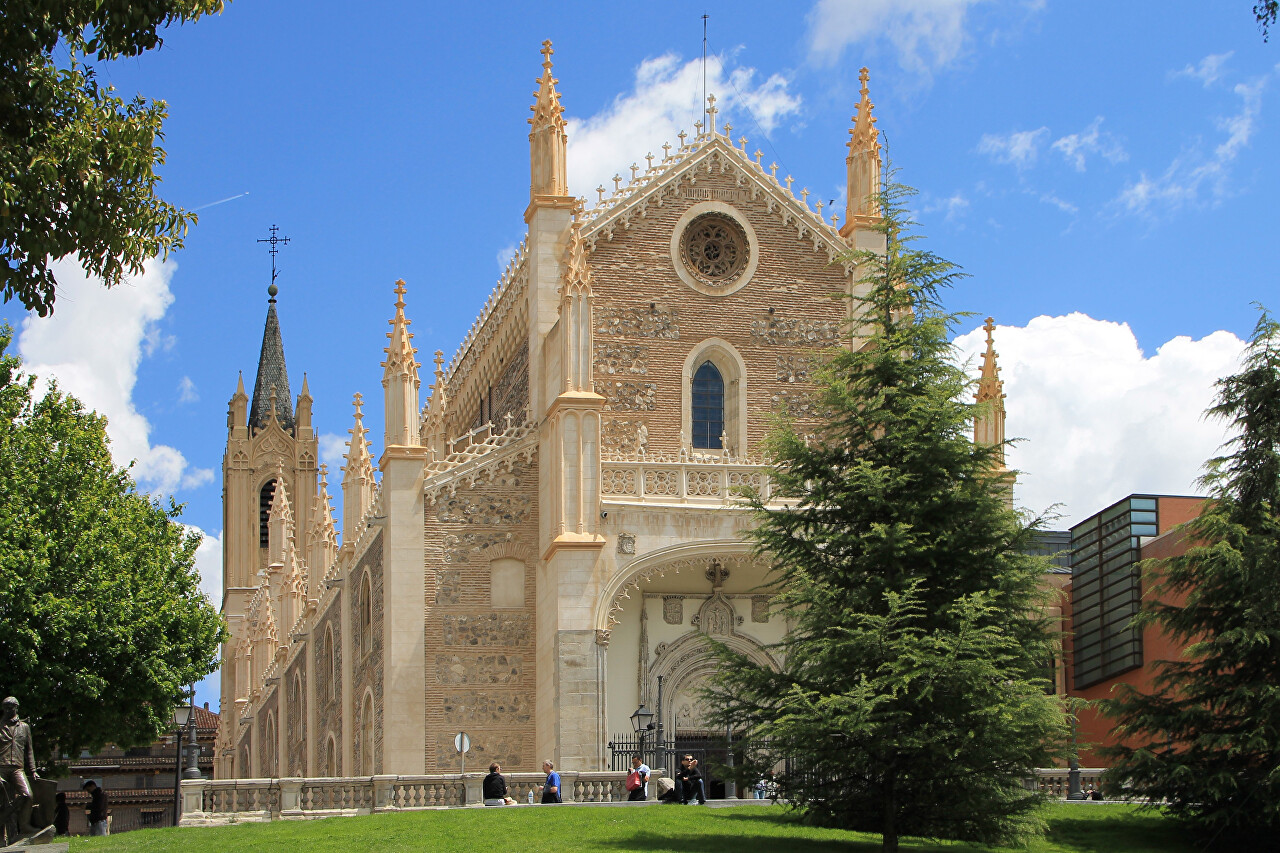
In 1463, King Enrique IV of Castilla granted the Order of Saint Jerome land to build a monastery on the banks of the Manzanares River. The area was swampy and the inhabitants of the monastery began to suffer from rheumatism, and in 1503 the pious Queen Isabella I ordered to build a new monastery in a more suitable location. Construction was commissioned by Toledo architect Enrique Egas. The new monastery was completed in 1505 and became the largest in Madrid, and also served as a royal residence when visiting Madrid.
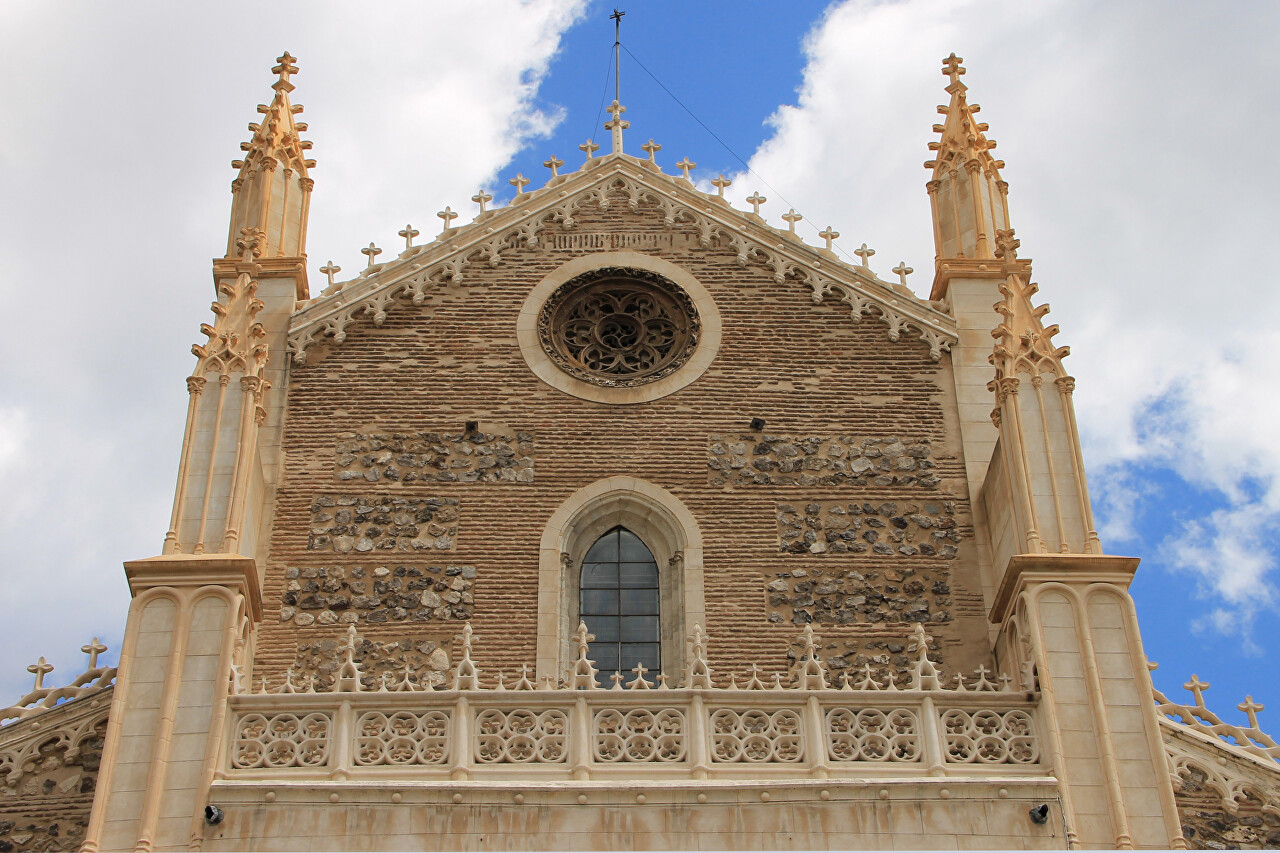
Under Philip IV, the Buen Retiro Palace was built nearby and the monastery church was given the status of royal (Iglesia de San Jerónimo El Real) and from that moment on is closely connected with the life of the Spanish monarchy. Prior to the construction of the Almudena Cathedral, the royal family took oaths on their accession to the throne, and members of the royal family were married and buried here.

During the invasion of Napoleon in 1808, the Buen Retiro Palace and monastery were completely looted and partially destroyed. After the war, King Fernando VII used the remaining premises of the monastery as artillery barracks.
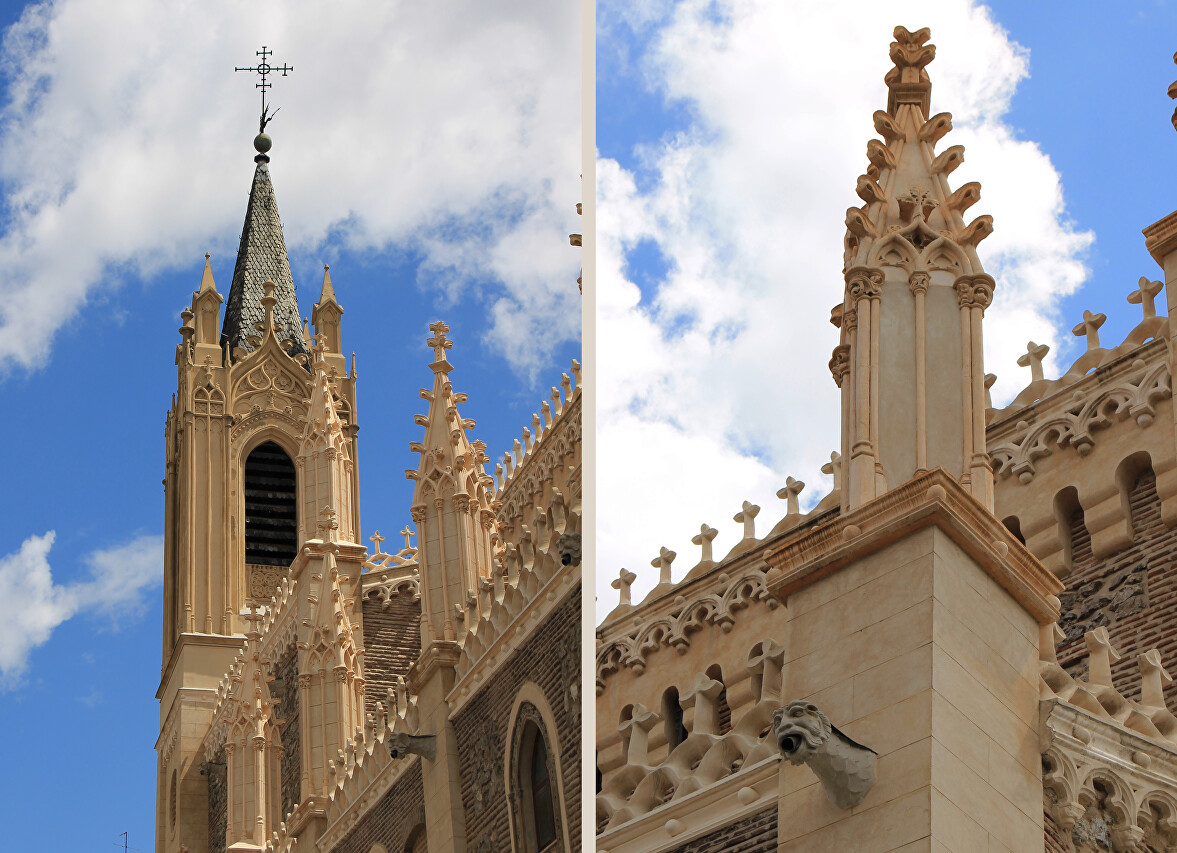
By the middle of the 19th century, the monastery was dilapidated and abandoned, and later dismantled and reassembled as an annex to the Prado Museum, and the church was rebuilt several times and is perfectly preserved to this day.
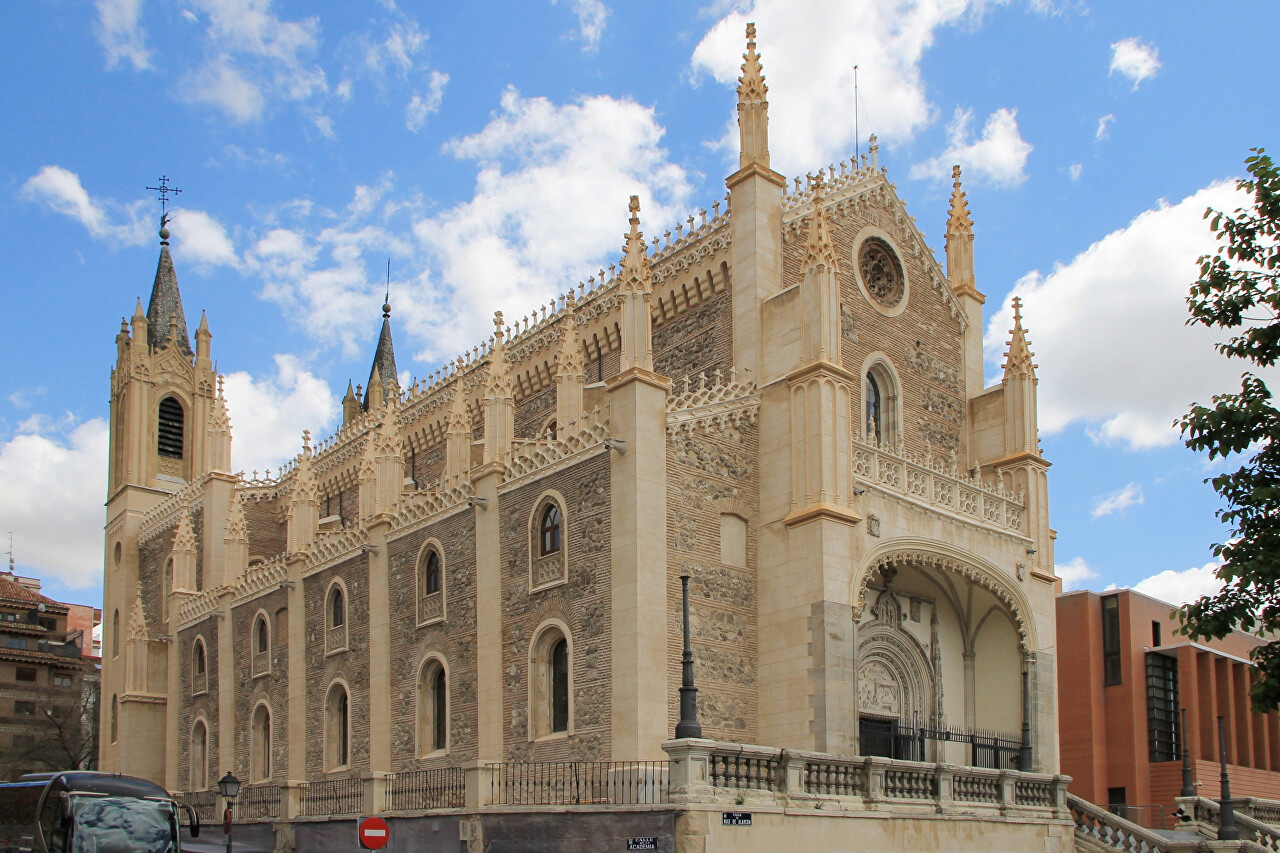
During the reign of King Consort Francisco de Asis Bourbon, the restoration of the monastery church was initiated by his wife Isabel II. The work was carried out from 1848 to 1859 under the direction of the architect Narciso Pascual y Colomer, and as a result, two towers appeared in the altar part.

In 1878, the church became the property of the Archdiocese of Toledo (Madrid belonged to it until 1995), under the direction of architect Enrique Maria Repullés, the interiors were rebuilt and re-decorated. The work lasted for five years, after which the church was opened in the status of a parish. At the same time, the church did not lose its connection with the royal family On May 31, 1906, King Alfonso XIII married Victoria Eugenia Battenberg in the church, and on November 27, 1975, King Juan Carlos I of Spain took the oath of allegiance to the crown. At the beginning of the XXI century, the church was transferred to the Prado Museum, was completely restored both outside and inside.
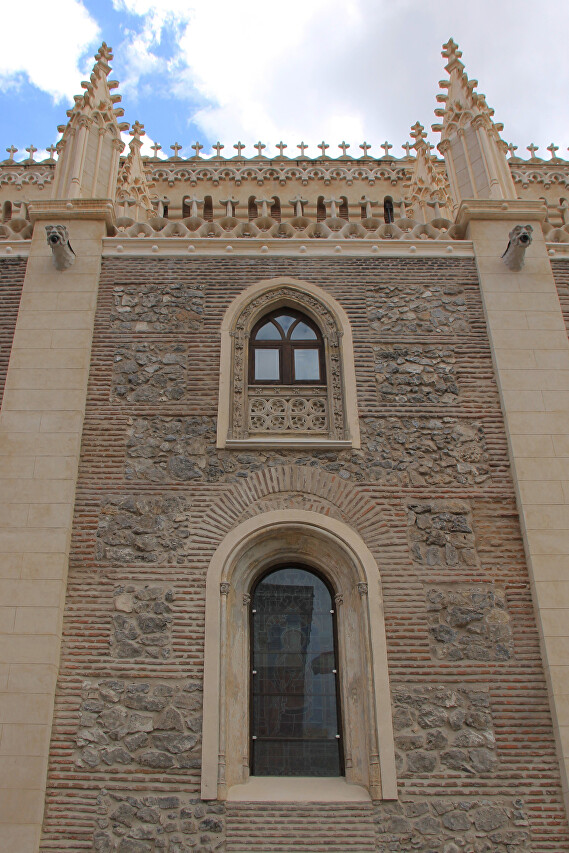
The church is open to the public on Monday, Wednesday and Friday from July 1 to September 15 from 10: 30 to 13: 00 and from 18: 00 to 20: 00, from September 16 to June 30 from 10: 00 to 13:00 and from 17:30 to 19: 30.